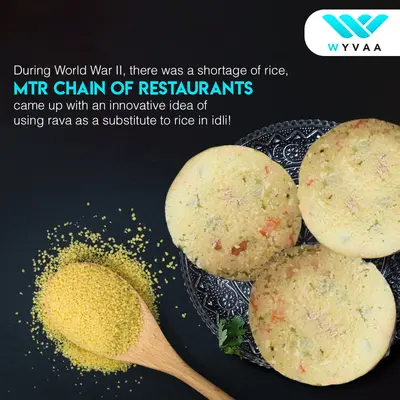When we talk about eating that delights the senses, it is usually in terms of excess: lavish feasts, beguiling desserts, biryani with golden “pearls”, wedding sadya with multiple dishes, butter, cream, long cooking processes…foods that connote a rich lifestyle.
But at its basic, food is about survival. And some of the most imaginative foods have been produced not in times of surplus but in times with sparse supplies. This is what makes cooking so creative—the impulse to transform the basic into that what can uplift us, however dire the situation.
Today, as many parts of the world look at high inflation, spiraling food prices, and short supply, it may be time to economize, and yet that doesn’t mean we forgot inventiveness.
Throughout history, “foods of deprivation” — from potatoes to green pepper, foraged greens and peels to roots and tubers and others have been made for innovative dining. Many “classic” dishes of today are thanks to upheavals like wars or economic depression.
The Rava idli is a classic example: An innovation that came about due to a shortage of rice around World War II.
My friend Hemamalini Maiya, the third-generation co-owner of the iconic Bangalore restaurant MTR, once narrated the story of her family and the dish, now well documented, including in my book, Business on A Platter: What Makes Restaurants Sizzle or Fizzle Out (Hachette India).
In 1920, three brothers from Parampalli, a village in South Canara, left home to escape poverty and turned up in Bangalore. Parmeshwara, Ganappayya and Yagnanarayan Maiya were typical of their south Karnataka Brahmin community in that they all knew how to cook. This resulted in Parmeshwara finding work as a cook in a judge’s home.
This judge helped the brothers set up a tiny eatery at the posh Lalbagh Fort Road, a few years down the line in 1924, and this place from where they sold coffee and “tiffin” eats aka idli, dosa and other snacks became the genesis of the iconic Mavalli Tiffin Room that opened at a neighbouring site in 1960, and still stands there today.
The Maiya brothers were my friend Hemamalini’s grandfather and great uncles. Despite their traditional affiliations, they realised that innovation was needed for success. Yagnanarayan, the youngest brother, Hema’s great uncle, tweaked various recipes of his south Canara community, amongst them the bisibele bhat—the MTR version is spicier, and these are now the “classics” people know better than the originals.
Yagnanarayan’s most successful creation is the rava idli. When a shortage of rice hit India around World War II, he decided to use with rava or semolina as a substitute—mixing it with curd to simulate the sourness of a fermented rice-dal batter, and seasoning it with karipatta, cashews and spices. This rava idli is now on every south Indian restaurant menu, and copied by home cooks looking to make “instant idli”!
Favorite
MTR Rava Idly.. Mix it with curd steam it and done
pic.twitter.com/ZP4zXHyuHF
— Chitra M (@masalaboxtravel) October 16, 2020
This clever substitution of ingredients is reminiscent of the cult of the “depression cakes” that formed in the US around World War I and the Great Depression of the 1930s. Eggless cakes are well known today but that was their start as baking powder started substituting eggs in short supply. (Egg whites are aerated to make the cake soft and less dense; this is similar to what chemical baking powder does). Meanwhile, butter was substituted by shortening (and eventually margarine, now discredited), and milk by water.
Also Read: Sugar—How ancient India’s brilliant innovation has ruled the world
Depression cake recipes were even aired on radio shows, including during the very popular Betty Crocker’s Cooking Hour named after the brand and fictional character whose cake mixes sell in India even today. “Depression era foods”, now making a comeback in the US, also included the likes of potato and leek soup, creamy without the use of cream, pasta bulked up with green peas, as well as stuffed green peppers.
Green peppers in fact are a gift of the Great Depression too as farmers were forced to sell their unripe peppers (rather than wait for these to turn red). In India, the variation Bharwan Shimla Mirch is a rather generic dish which cannot be ascribed to any one region or community. It may have been a “party dish” inspired by Western food trends in the 1940s and 1950s, stuffed with potatoes instead of meat. Capsicum is called shimla mirch since the British grew it in Shimla, initially, for their own use.
World War II meanwhile gave birth to an unwitting food trend: vegetarianism or veganism. The use of vegetables in meals increased as rationing was introduced in 1939, and meats were hard to come by. Wartime books around vegetables include “Potatoes: To Know and To Serve” (by Ernest Oldmeadow, published by The Wine and Food Society in London, in 1943) and “Lilies of the Kitchen” (by the same author and publisher, also in 1943) as also the author’s earlier, very popular “Home cookery in wartime”, with many non-meat recipes. “Vegetarianism”, Oldmadow writes, “has a good deal in it just as there is a good deal in temperance…”
Lifehacks from the early 20th century. Home Cookery in War-Time, by Ernest Oldmeadow, 1915. pic.twitter.com/dyEfivZO3o
— Meryl Badger (@thedomineditrix) March 25, 2016
Dishes such as lentil sausages, nasturtium pickles and nettle soups of the war time table in England can actually compete with what top chefs in Europe today are dishing out.
In India, even without the big wars, food of the poor, different from courtly cuisines, always relied on locally foraged or farmed ingredients. Bicchu booti, the Himalayan nettle, for instance, has always been a common pahadi saag.
Kitchens presided over by matriarchs with many mouths to feed have also always innovated using every part of an ingredient resulting in dishes such as fish head gravies, peel bhajas, laddoos of dried melon seeds, subzi of watermelon rinds and even cauliflower danthal. But even courtly cultures knew how to conserve resources. A disappearing dish from Hyderabad is literally “kachra biryani”, using cheaper cuts of meat that would go to waste otherwise.
Specific shortages triggered new eating cultures. In Kerala, kappa or tapioca is intrinsic to the culinary culture, used as a starch in place of rice with dishes like kappa and meen (fish). But tapioca is not native to Kerala. It has roots in Brazil.
Tapioca Plants.
=>Tapioca chips,kappa biriyani etc..How Tapioca came to Kerala from Brazilhttps://t.co/XCRd3XfrZQ pic.twitter.com/tjoqgCzF1x
— C.J.Varghese (@CjVarghese96) April 7, 2020
Oral accounts suggest that the Varma ruler of Travancore introduced it in the late 19th century when a famine hit the region. Since the tuber is hardy and can grow with little water, it propagated easily. It’s use spread to other regions such as Maharashtra, where sabudana, or tapioca pearls, is a substitute for grains during fasting and in khichdi.
Nothing, however, beats the ubiquitous potato as a food of scarcity. We all know of the great Irish famine caused by diseased crops, but what we may not know is how important the potato was to Europe’s population growth, political stability and industrialisation in the 19th century. While the potato had been introduced from South America via the Columbian Exchange at least a century-and-a-half before, it was not until Napoleon that peasants took up its large-scale farming. With those shortages became fewer and political situations more stable.
Also Read: From Momo to Samosa, Mantou to Ravioli: How dumplings from the East and the West unite us
In Ireland, drained off its agri wealth via forced exports to England, poor farmers subsisted on potatoes. An account of a surviving family from the Irish famine of the mid-19th century estimates that a single acre of potato could yield up to 6 tonnes of food, enough to feed a family for a year.
In India, the potato arrived probably via the Dutch, but till the late 19th century, it remained a novelty, a food of the elite, contrary to its use in Europe. It is instructive to know that when Warren Hastings met the then Nawab of Avadh in the late 18th century, the nawab presented to him with a basket of potatoes!
Thus, the story of the Awadhi biryani metamorphosing into Calcutta biryani as Wajid Ali Shah’s cook's substituted meat with cheaper potatoes is possibly untrue. It is more likely that they used it as a novelty and an elite ingredient. But slowly, in India too the potato evolved to become food for the masses, subsidizing household (and restaurant) budgets. Its prices may be rising currently, but it remains a food that has spurred inventiveness on a budget—from the masala dosa to litti chokha!
Also Read: From Muzaffarpur to Jamaica—how one dish travelled the world




















